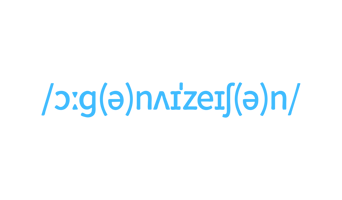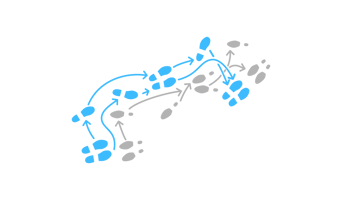Without any doubt, we live through a renaissance of organization design as a discipline. Organizations large and small engage in organizational experiments. Radical new models emerge, are refined and adopted – be it self-management models like Holacracy, the responsive org movement, network organizations, or tribes and squads. As we have argued before on this blog, such management innovations are to be applauded. Even if not every “radical new approach” proves that radical upon close inspection (or that new, for that matter), the overall trend is welcome as it contributes to the discipline and triggers practitioner learning and reflection on organizing. Times are over, it seems, when org design was reduced to drawing org charts or only started in the “implementation” phase following a grand strategy writing exercise.
We will continue to review and discuss novel org design approaches (and elements thereof) on our Management Kits Blog and in the course of our Kit development and client work. In this very post, we want to discuss this renaissance in the context of digitalization. The two trends coincide and even strengthen each other – and here is why. From our experience, there are at least five reasons.
Disruptive competition, often based on digital platforms and solutions, demands dealing with constant change, increased adaptability of incumbent players, and matching disruptors’ capabilities
German car maker Daimler is a good example. Traditionally a technological leader in her field, the company is now faced by at least three major shifts: digitalization and platform-based disruptions (UBER), automation and driverless cars (Google and Apple), and electrification (Tesla). As a result, Daimler may face a future where fleets consist of self-driving, electric vehicles and are maybe only 20% of today’s size – challenging many key dimensions of its as yet superior value proposition. Daimler CEO Zetsche directly quotes such developments when justifying one of the biggest transformation efforts in the organization’s history including the move towards a network organization, simplifying decision making, and more flexible budgeting approaches.
Given the speed of technological development, the half-life of experience and competence is drastically reduced – but experience and competence have always been the key justification of hard-coded hierarchies
Many novel approaches to organizing challenge traditional organizational hierarchies – either directly, as in Holacracy, or indirectly through team set-ups and leadership models. They propose shared and shifting leadership or a constant and self-organized flux in organizational structures as requirements may change over time.
In discarding hard-coded hierarchies those new models throw out one of the oldest coordination mechanisms or large-scale organizations. The ultimate justification to put in place bosses was their superior qualification (based on experience and competence) and thus their ability to coordinate work across units and functions, not least for their understanding of the ‘big picture’. In a context that is highly insecure and changing fast, such a superior qualification is hard to gain – and if it is, it changes in nature. With digitalization, itself being a dynamic phenomenon, organizations have to learn ever new skills and capabilities. And they will not learn them by listening to old school leaders who earned their merit (and their positions) in a long-gone context. A senior manager in a company heavily affected by digitalization recently told me in private how his organization’s executive board frequently has to make decisions the implications of which they barely understand. It is important to note that learning in such a context does not mean the acquisition of codified knowledge. Learning rather means teams coming up with creative solutions to non-standard problems. Learning in such contexts means creating knowledge in the context of unique challenges rather than acquiring it.
Many of the new organizing models come from IT people and companies, making the “digital approach” a role model for re-organizing
For example, Holacracy was codified by Brian Robertson based on the older sociocracy model and his experience as a software company founder – and many of the semantics in Holacracy are reminiscent of IT artefacts, such as “operating system” or “apps”. The strict formality of the approach implies the belief that human collaborative interaction can (and actually should be) “coded”.
Another, more pertinent example are agile ways of working. Agile ways of working where developed in large scale software development projects and where first formally codified in the 2001 agile manifesto, a collection of relative prioritization rules which deserves a quote:
“We are uncovering better ways of developing software by doing it and helping others do it. Through this work we have come to value:
Individuals and interactions over processes and tools
Working software over comprehensive documentation
Customer collaboration over contract negotiation
Responding to change over following a planThat is, while there is value in the items on the right, we value the items on the left more.”
This manifesto set in motion (and probably was developed itself in the context of) a whole slew of new methods, tools, and techniques in software development and “unprecedented changes to the software engineering field … It is hard to think of a decade in the twentieth century that has witnessed the introduction of so many software methods, tools, techniques, and best practices”. It is important to note that this relates not above all to the technology but really to how the work is managed and organized.
Why would this be significant for organizing and management overall? Levels of IT investment in the US have been at around one third of total non-residential capital formation over the years. These proportions are mirrored in headcount. The IT department of a global bank I recently gave a training for accounts for close to one quarter of its total staff.
I argue that a major management transformation of a key function with such weight will not remain without effect on other parts of the business – especially if this function leads work on the digital tools and techniques that support the redefinition of business models, channels, and customer experience. That new technologies developed this way gave rise to major new companies and players further supported the legitimacy of new ways of working and organizing. Note how global Dutch banking player ING is open about copying Spotify’s “tribes and squads” organizing model to integrate its product houses with its IT, instead of having the two working together in a type of internal service relationship. Agile organizing has its roots in software development – but it is taking over management structures in the course of integrating its value contribution with business functions. GE’s former CEO Jeff Immelt declared GE a software company – it comes as no surprise that it is looking for ways to work like a software company at the same time.
Faced with digitalization, large incumbent companies are often forced to centralize and decentralize at the same time, making traditional top-down management structures obsolete
As we have discussed here before, digital transformation can put some paradoxical demands on your organization design agenda when it comes to centralization and decentralization.
Generally, in org design and with novel forms of decentralized set-ups especially, there is the question of integration, common platforms and shared frameworks. This applies to management systems, but also support functions, policies or regulatory non-negotiables – and of course data as well.
I was recently involved in the discussion of a global publishing house with a proud and long history, active mainly in the field of academic publications and sophisticated professional data and content provision. Their digitization efforts involved building a global business platform but at the same time required a lot of market-based innovation activities, as the nature of their products (with dozens of different publications and information offerings across the world) implied a lot of highly country specific products – at least in terms of content. As a result, there was a push for centralization and for decentralization at the same time.
Building common platforms and data models would for sure be a topic of centralization in this case. However, organizationally the question then is how to integrate those platforms at the point of cross-functional, multi-local teams. Those teams may share (some features of) the joint platform as well as the data model, and it may enable them to leverage central development work and standards while doing customer-centric innovation in the markets with some genuinely “decentral” inputs. Case in point would be the sales force: whereas in a non-digital model they would focus on selling a pre-defined product they now need to be involved to bring their customer relationships and insights to the product innovation workshops.
The best decentral integration mechanism are indeed cross-functional team structures involving enterprise architects and other ‘digital' functions, as long as they pay due attention to the demands of teaming: clear purpose and goals, right set-ups and structures internally, functional leadership, functional communication patterns, etc.
One common denominator of the different new forms of organizing is finding solutions for striking this balance: building scale through shared and centralized frameworks, while leveraging those assets in an agile and adaptable way in dispersed development and delivery teams.
The change brought about by digitalization in many cases is so fundamental that “great leadership” alone without changing management structures will simply not do
New organization models also gain traction in the course of disruptive change as the leadership discourse does not provide sufficient answers. ‘If only there was great leadership all the traditional structures would work just fine’ is wishful thinking. We put superhuman expectations on organizational leaders so they can lead us through a highly uncertain environment: leaders are supposed to be entrepreneurial, self-controlled, role models, coaches, situational, mindful, authentic, networked – among other things. Such profiles would be able to cope with any organizational structure and make up for toxic politics, rigid silos, complicated decision making, complex stakeholder constellations, etc. I argue that the renaissance of organization design in part is a response to the exhaustion of the leadership discourse. And it makes leadership development no less important when you concede that it takes more to make our business structures more functional and adaptable.
Digital tools have the potential to make distributed work and collaboration easier and more effective
A final confluence of digitalization and new forms of organizing are digital tools supporting collaboration and communication within and between teams, such as cloud-based working, social media, and communication tools of all sorts. Those tools have the potential to reduce distance, ease workflows and create transparency, allowing for information and data sharing that improves and accelerates decentralized decision making.
New forms of organizing are triggered, demanded and facilitated by digitalization – for them to work in practice, however, requires conscious and deliberate management work. Not all new models will prove useful. Not everything that has been in place will become obsolete.
We are working on an Agile Organizing Kit translating management research and novel practices into useful tools for business design and action learning – with the goal of making organizations more adaptable. Contact us with your management challenges and to exchange ideas on the subject.



